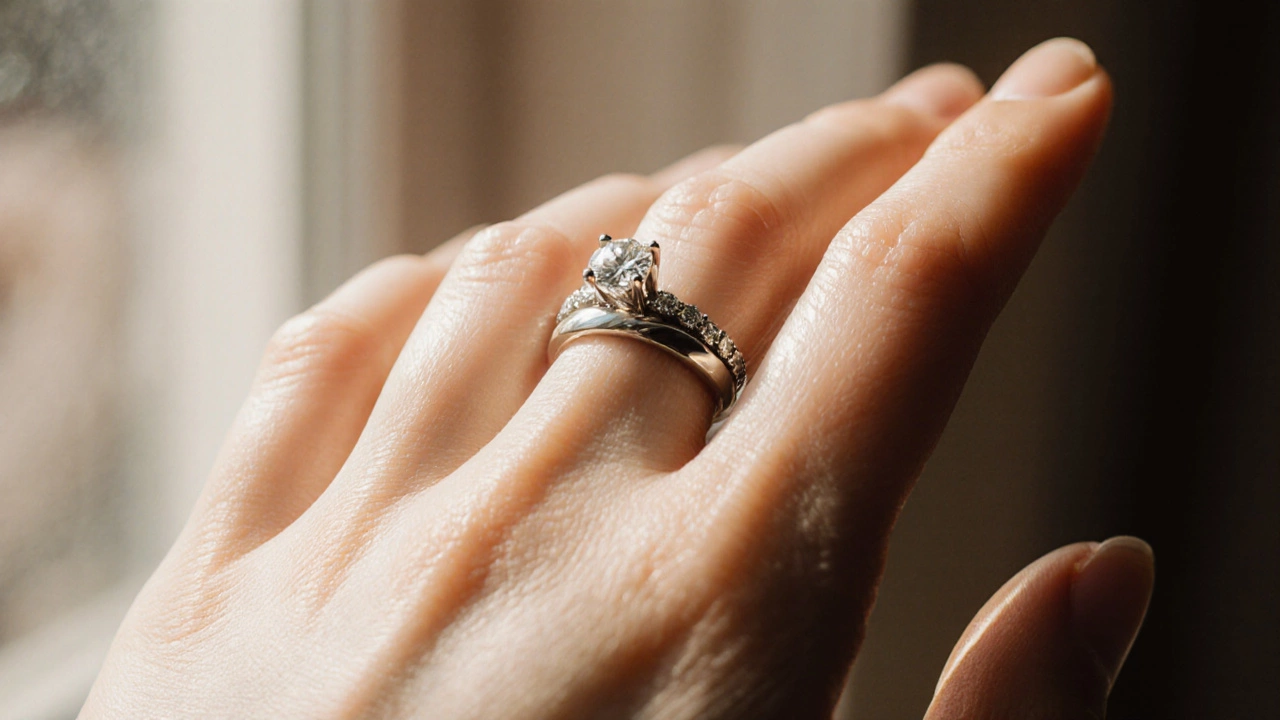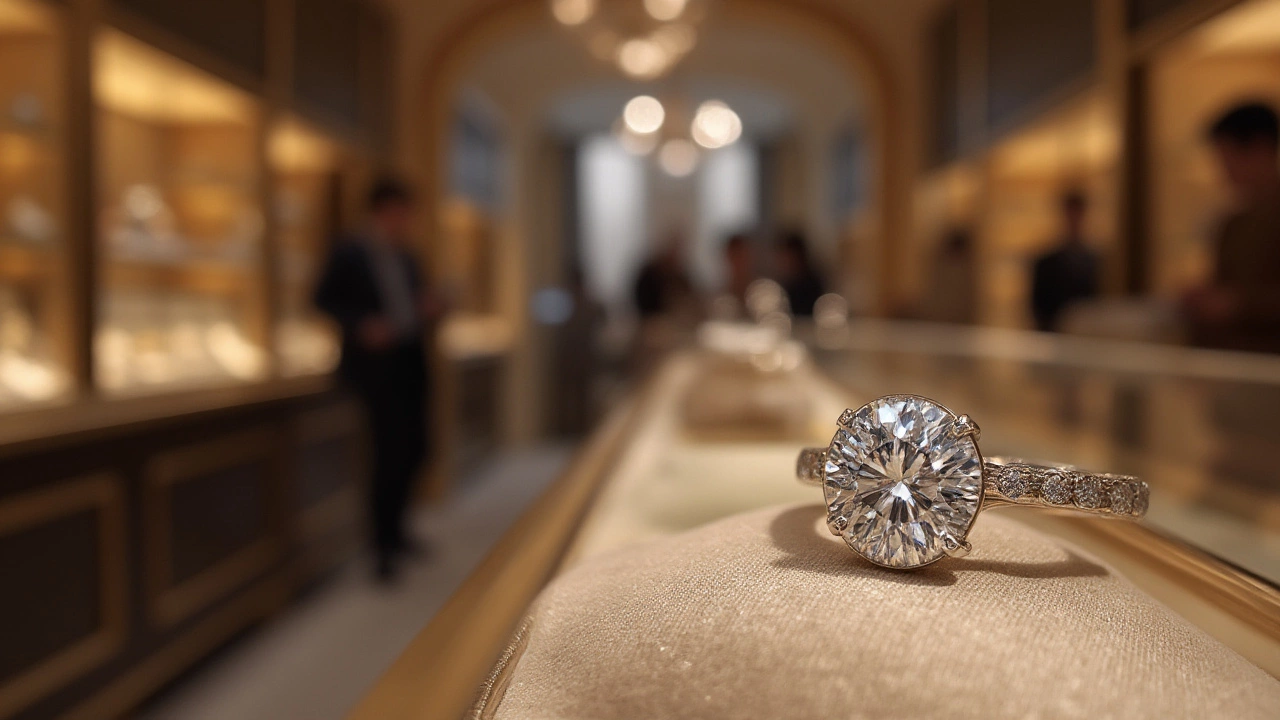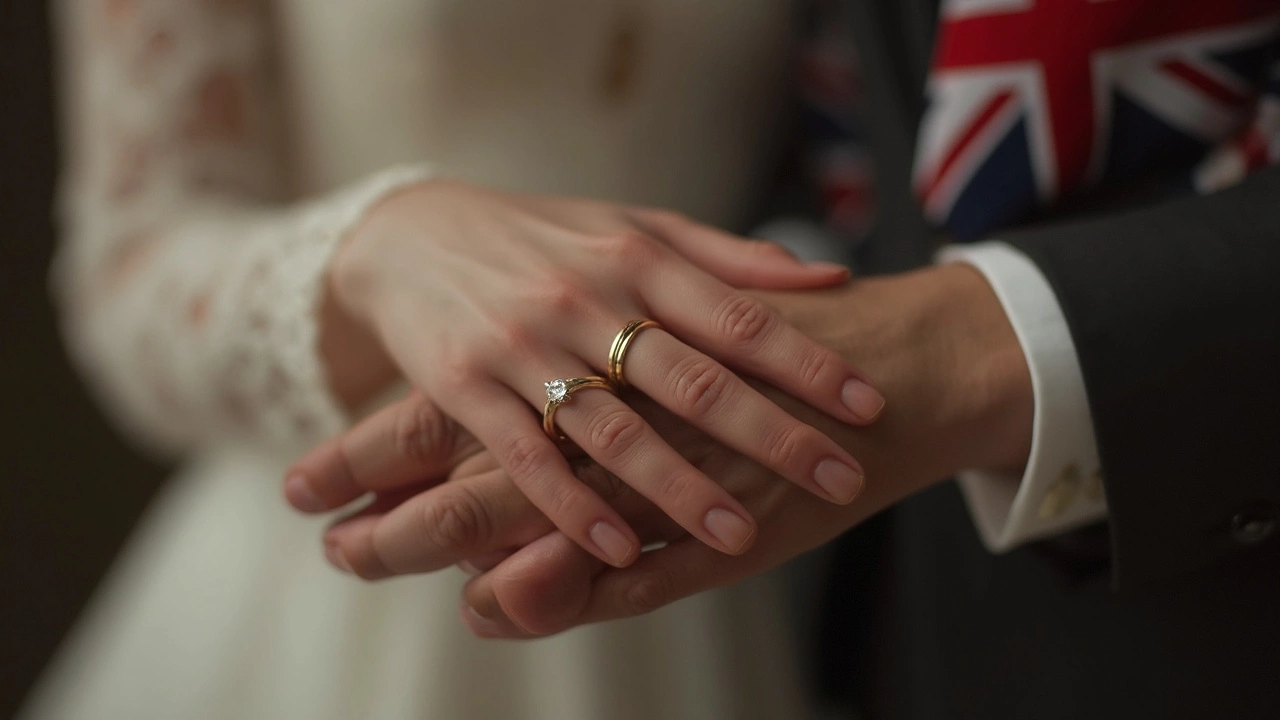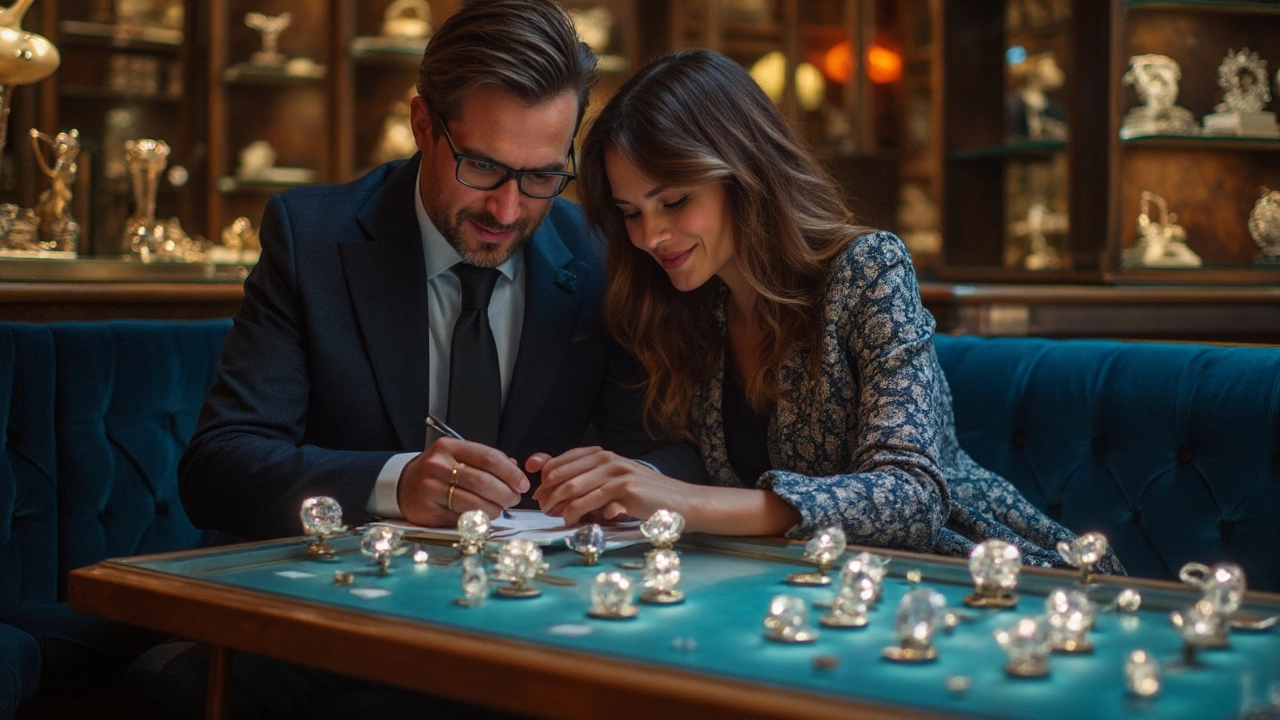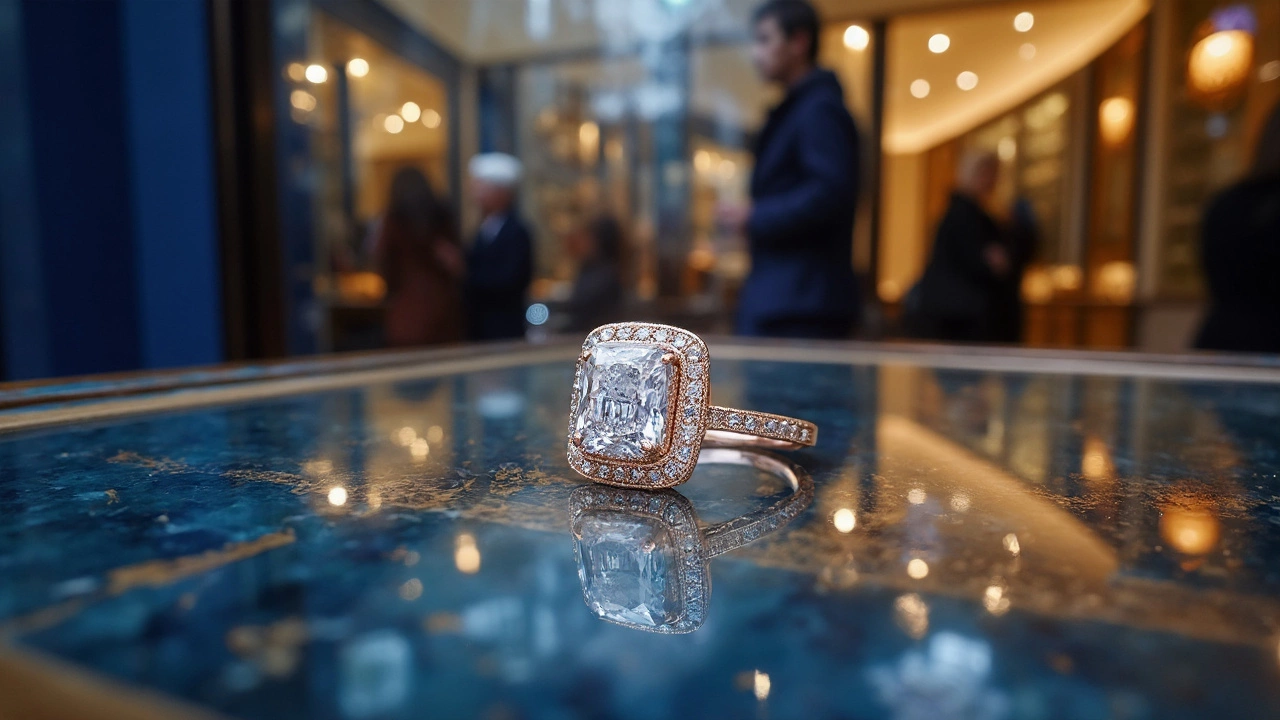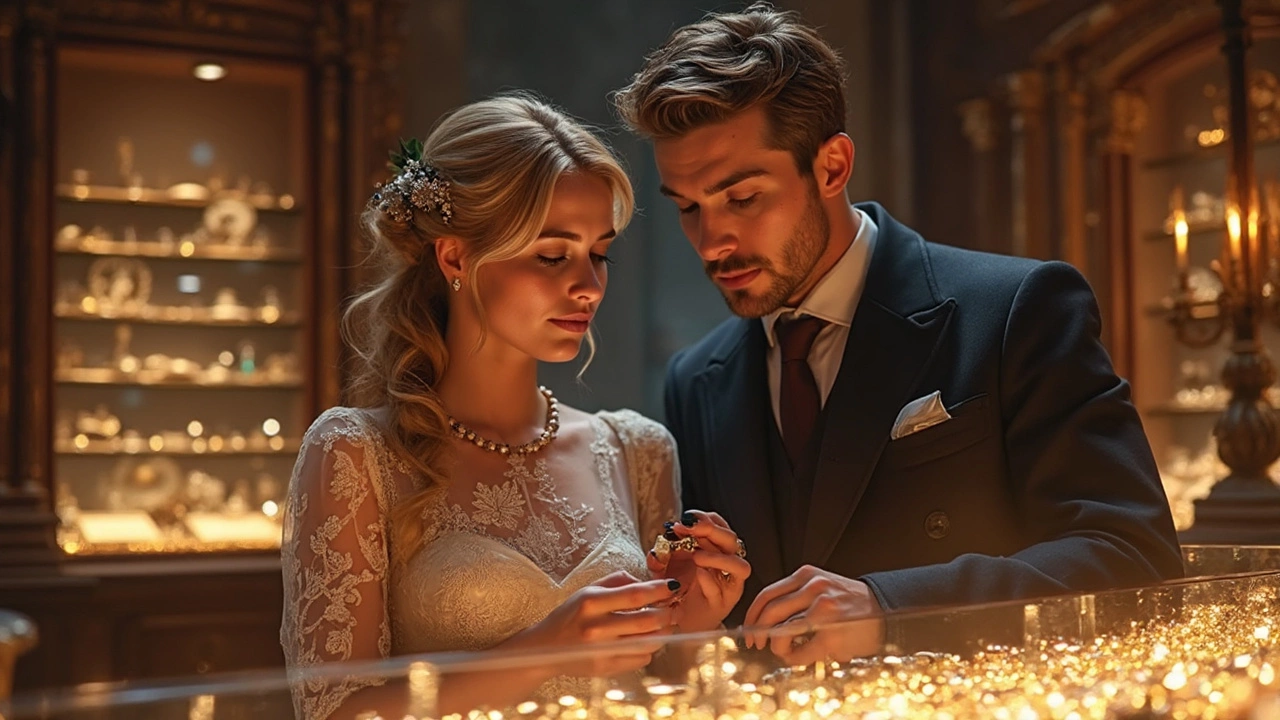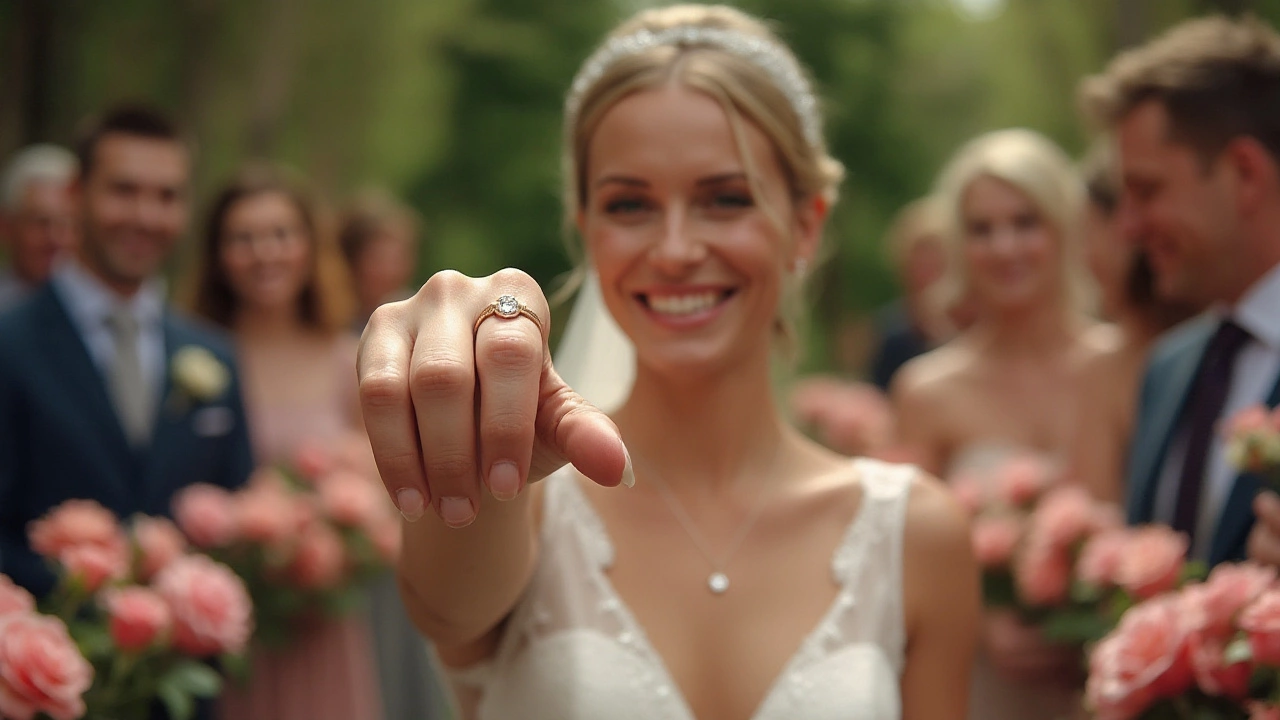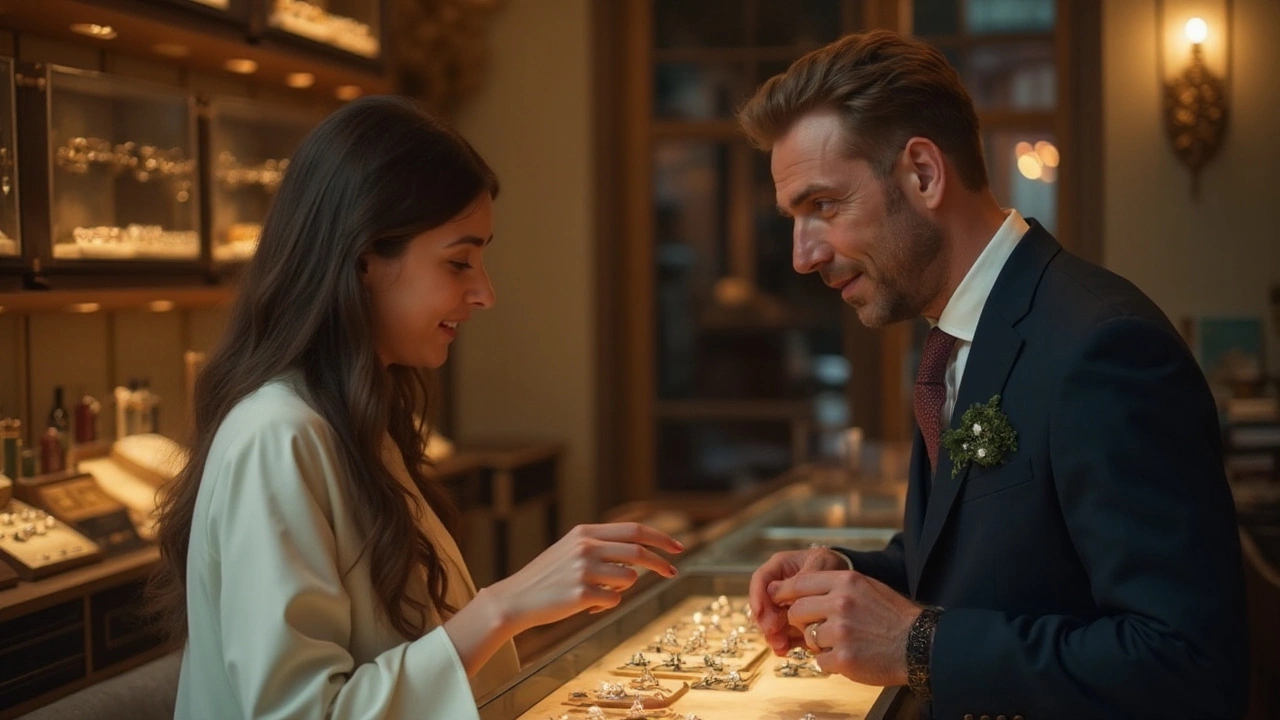Wedding Rings: How to Pick the Perfect One for Your Big Day
Choosing a wedding ring can feel overwhelming, but it doesn’t have to be. You’re looking for something that feels right, fits your budget, and matches your style. Below you’ll find practical advice on budgeting, carat choices, and the traditional order of putting on rings.
Set a Realistic Budget and Stick to It
First thing’s first – decide how much you’re comfortable spending. Many couples wonder if $10,000 or $20,000 is a lot for an engagement ring. The truth is, a $10,000 budget can get you a beautiful diamond of decent size and quality, while $20,000 opens up even bigger options and higher‑grade stones. If you’re working with $5,000, focus on the cut and clarity rather than carat weight. A well‑cut half‑carat can sparkle more than a dull one‑carat.
Look for certified diamonds and compare prices from a few trusted jewelers. Remember, the setting and metal also affect cost – a simple platinum band may cost more than a gold one with the same stone.
Carat Size, Cut, and Quality Made Simple
Carat is just a measure of weight, not sparkle. A 0.75‑carat diamond with excellent cut can look bigger than a 1‑carat with poor cut. Ask the jeweler about the 4 Cs – carat, cut, color, and clarity – and prioritize the ones that matter most to you. If you love a lot of sparkle, focus on cut. If you want a clear stone, look at clarity grades like VS1 or VS2.
For wedding rings (the band you’ll wear forever), many couples choose a modest diamond or a simple metal band. A 0.25‑carat accent stone set in a plain band can be elegant and affordable.
Now, about the order of rings – should the engagement ring go on first or the wedding band? Tradition varies by culture, but a common approach is to slide the wedding band on first, then push the engagement ring up the finger. This way the wedding band stays closest to the heart. Some people prefer the opposite, so try both ways at home and see which feels right.
When the big day arrives, think about comfort. If you plan to wear both rings together, make sure the band sizes match and the setting allows the rings to sit flush. If you’re nervous about the engagement ring catching on a dress or veil, you can keep it in a safe place until after the ceremony and put it back on for the reception.
Final tip: try on different styles and metal types. Gold, white gold, rose gold, and platinum each have a unique look. Consider your lifestyle – if you work with your hands a lot, a lower‑profile setting may be safer.
With a clear budget, a good grasp of the 4 Cs, and a plan for how you’ll wear your rings, you’ll walk down the aisle feeling confident about your choice. Happy ring hunting!
Is $1000 Enough for a Wedding Ring? Real Costs and Smart Choices in 2025
Is $1000 enough for a wedding ring? Yes-with smart choices like lab-grown diamonds, moissanite, or vintage settings, you can get a beautiful, lasting ring without overspending. Real couples are doing it in 2025.
Read moreDo You Still Wear Your Engagement Ring After You Get Married?
After marriage, do you keep wearing your engagement ring? Many couples stack it with the wedding band, while others switch to just the band or repurpose the ring. There's no right or wrong-just what feels true to you.
Read moreHow Big Is a $10,000 Ring? What to Expect for Your Money
What does a $10,000 ring really look like? Uncover ring size, carat weight, style options and buying tips in this detailed and practical guide.
Read moreWhich Ring Goes On First? Your Wedding Stack, Explained
Ever wondered if the wedding ring or engagement ring goes on first? This article breaks down exactly how to stack your rings, what traditions say, and why the order matters. You'll find smart tips for ceremony day, get a peek at global customs, and learn how to make your own style statement. Clear, straight-to-the-point advice for anyone getting ready to walk down the aisle.
Read moreIs $10,000 Enough for an Engagement Ring? Real Numbers, Real Expectations
Wondering if $10,000 is enough for an engagement ring? This article breaks down what $10,000 can actually get you, including diamond size, quality, and popular brands. It covers whether this budget matches current expectations and trends, plus some practical tips for making your money go further. Get real talk on balancing wants and budget, so you don't overspend or get shortchanged. Perfect if you're planning a proposal or just curious what goes into the price tag.
Read moreIs $20,000 a Lot for an Engagement Ring? Let's Dive Deep
Engagement rings often come with hefty price tags, but is splurging $20,000 worth it? In this article, we evaluate what that amount can get you in terms of size, quality, and brand. We also discuss alternatives that won't break the bank and what factors should guide your budget. Whether you’re a traditionalist or love blazing your trail, we've got insights to help you weigh your options.
Read moreHow Many Carats Should a Wedding Ring Be? A Practical Guide
Choosing the right carat for a wedding ring can be daunting, as factors like budget, lifestyle, and personal preference all play key roles. This guide explores everything you need to consider when determining the ideal carat size for your ring. From understanding what carat weight really means to insider tips on balancing sparkle with practicality, we’ll help you find a ring that embodies love without breaking the bank.
Read moreWearing Your Engagement Ring on Your Wedding Day
Many brides wonder whether they should wear their engagement ring while walking down the aisle. This decision often depends on personal preference, tradition, and practicality. The article explores how different cultures and individuals approach this situation, offers tips for managing jewelry on the big day, and provides insights into alternative options to ensure both rings are showcased beautifully and comfortably.
Read moreHow to Choose a $5000 Wedding Ring: Carats and Considerations
Finding the perfect wedding ring involves more than just price; it's about balancing quality, beauty, and budget. With a $5000 budget, understanding how carats influence diamond size and quality is crucial. This guide delves into the intricacies of selecting carat size within a $5000 budget, providing essential insights and tips to help you find a ring that's both beautiful and meaningful. Learn what factors to prioritize to maximize value and discover potential alternatives that might surprise you.
Read moreChoosing the Perfect Diamond Size for a $20,000 Wedding Ring
Discover the possibilities of selecting the ideal diamond size for a $20,000 wedding ring budget. Explore how factors such as diamond quality, shape, and setting can influence your choice. Learn some insider tips for maximizing value and understanding the importance of certifications. With this guide, make an informed decision that reflects both your personal style and financial sense.
Read more
